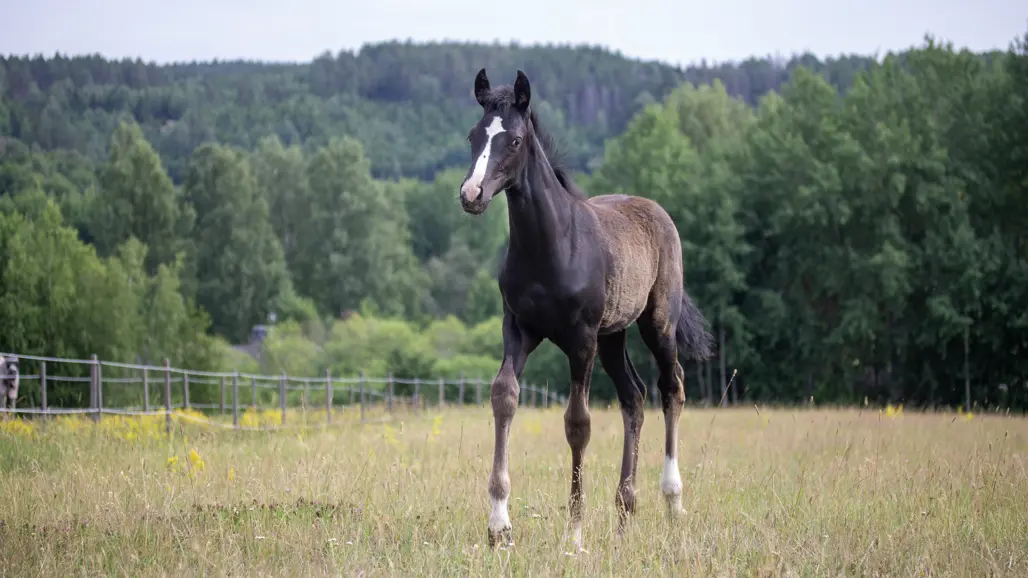
Presence of movement asymmetries in foals
When a horse becomes lame it moves asymmetrically, which can be measured objectively during a lameness examination. However, studies have shown that a very large proportion of horses, trained and competed, also move asymmetrically: Raising the question of whether there are causes other than pain.
Can an asymmetric movement pattern be innate or does it arise from training the horse?
The results
In a research project at the Swedish University of Agricultural Sciences, the movement patterns of 54 foals were studied using an objective movement analysis system. The foals were 4-13 weeks old, an age when the risk of traumatic and training-related injuries was considered low. The movement of the head, withers and croup was measured at the trot and differences between the right and left sides were calculated to investigate whether the foals were loading their legs evenly.
The results showed that 45% of Swedish warmblood foals and 83% of trotting foals moved asymmetrically. Interestingly, the foals showed a large variation in the degree of asymmetry of movement between steps, which is rarely seen in clinically lame horses.
The foals' asymmetries of movement could possibly be due to an innate laterality, such as right- or left-handedness in humans. However, researchers cannot rule out the possibility that some of the asymmetries were caused by pain resulting from traumatic injuries or congenital diseases such as osteochondrosis (‘loose bones’).
This is the first study to investigate movement asymmetries in foals and is an important contribution to our understanding of the movement patterns of our horses.
The study is funded by the Swedish Horse Research Foundation.
Link to the publication
https://doi.org/10.1371/journal.pone.0284105
Reference
Zetterberg E, Leclercq A, Persson-Sjodin E, Lundblad J, Haubro Andersen P, et al. (2023) Prevalence of vertical movement asymmetries at trot in Standardbred and Swedish Warmblood foals. PLOS ONE 18(4): e0284105.
Contact
-
PersonEbba Zetterberg, PhD-studentHBIO, Anatomy and Physiology